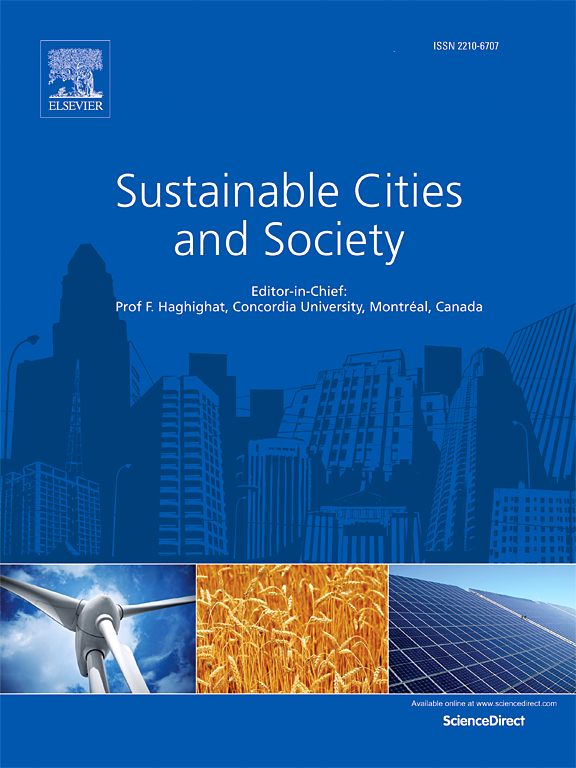Exploration of non-linear influence mechanisms of traditional courtyard forms on thermal comfort in winter and summer: A case study of Beijing, China
IF 10.5
1区 工程技术
Q1 CONSTRUCTION & BUILDING TECHNOLOGY
引用次数: 0
Abstract
Traditional courtyard architecture offers superior climate regulation function through its unique enclosed spatial form, which is significant in mitigating global warming, urban heat islands, and promoting sustainable urban development. However, existing research has not thoroughly explored the comprehensiveness of climate zones, the systematicity of morphological elements, and the non-linear mechanisms. This study investigates traditional courtyards in Beijing using an integrated approach combining field survey, ENVI-met numerical simulation, machine learning, and SHAP interpretation methods to reveal the non-linear influence mechanisms of courtyard morphology on thermal comfort. The results show that: 1) The XGBoost model achieves high accuracy in fitting study data, with R2 values of 0.99 and 0.85 for training and test sets, respectively; 2) The contribution of the built environment to thermal comfort in winter and summer (70 % and 52 %, respectively) is significantly higher than that of the natural environment, especially in winter; 3) Morphological features affect thermal comfort in winter and summer in a mostly synergistic way, but there are differences in the curve trend, threshold distribution, and the range of benefits, e.g., the benefits of Sky View Factor (SVF) on thermal comfort in winter and summer can be up to 2.0 °C and 1.5 °C, respectively; (4) The enhancement of thermal comfort of traditional courtyards in Beijing can be achieved through parameters such as aspect ratio (HAR), shape index (SI), and building coverage (BDG), but the implementation process is susceptible to limitations such as cultural values. The conclusions of this study make up for the shortcomings of current research areas, influencing elements, and research methods and help promote the sustainable development of courtyards in similar climatic and cultural contexts.
求助全文
约1分钟内获得全文
求助全文
来源期刊

Sustainable Cities and Society
Social Sciences-Geography, Planning and Development
CiteScore
22.00
自引率
13.70%
发文量
810
审稿时长
27 days
期刊介绍:
Sustainable Cities and Society (SCS) is an international journal that focuses on fundamental and applied research to promote environmentally sustainable and socially resilient cities. The journal welcomes cross-cutting, multi-disciplinary research in various areas, including:
1. Smart cities and resilient environments;
2. Alternative/clean energy sources, energy distribution, distributed energy generation, and energy demand reduction/management;
3. Monitoring and improving air quality in built environment and cities (e.g., healthy built environment and air quality management);
4. Energy efficient, low/zero carbon, and green buildings/communities;
5. Climate change mitigation and adaptation in urban environments;
6. Green infrastructure and BMPs;
7. Environmental Footprint accounting and management;
8. Urban agriculture and forestry;
9. ICT, smart grid and intelligent infrastructure;
10. Urban design/planning, regulations, legislation, certification, economics, and policy;
11. Social aspects, impacts and resiliency of cities;
12. Behavior monitoring, analysis and change within urban communities;
13. Health monitoring and improvement;
14. Nexus issues related to sustainable cities and societies;
15. Smart city governance;
16. Decision Support Systems for trade-off and uncertainty analysis for improved management of cities and society;
17. Big data, machine learning, and artificial intelligence applications and case studies;
18. Critical infrastructure protection, including security, privacy, forensics, and reliability issues of cyber-physical systems.
19. Water footprint reduction and urban water distribution, harvesting, treatment, reuse and management;
20. Waste reduction and recycling;
21. Wastewater collection, treatment and recycling;
22. Smart, clean and healthy transportation systems and infrastructure;
 求助内容:
求助内容: 应助结果提醒方式:
应助结果提醒方式:


